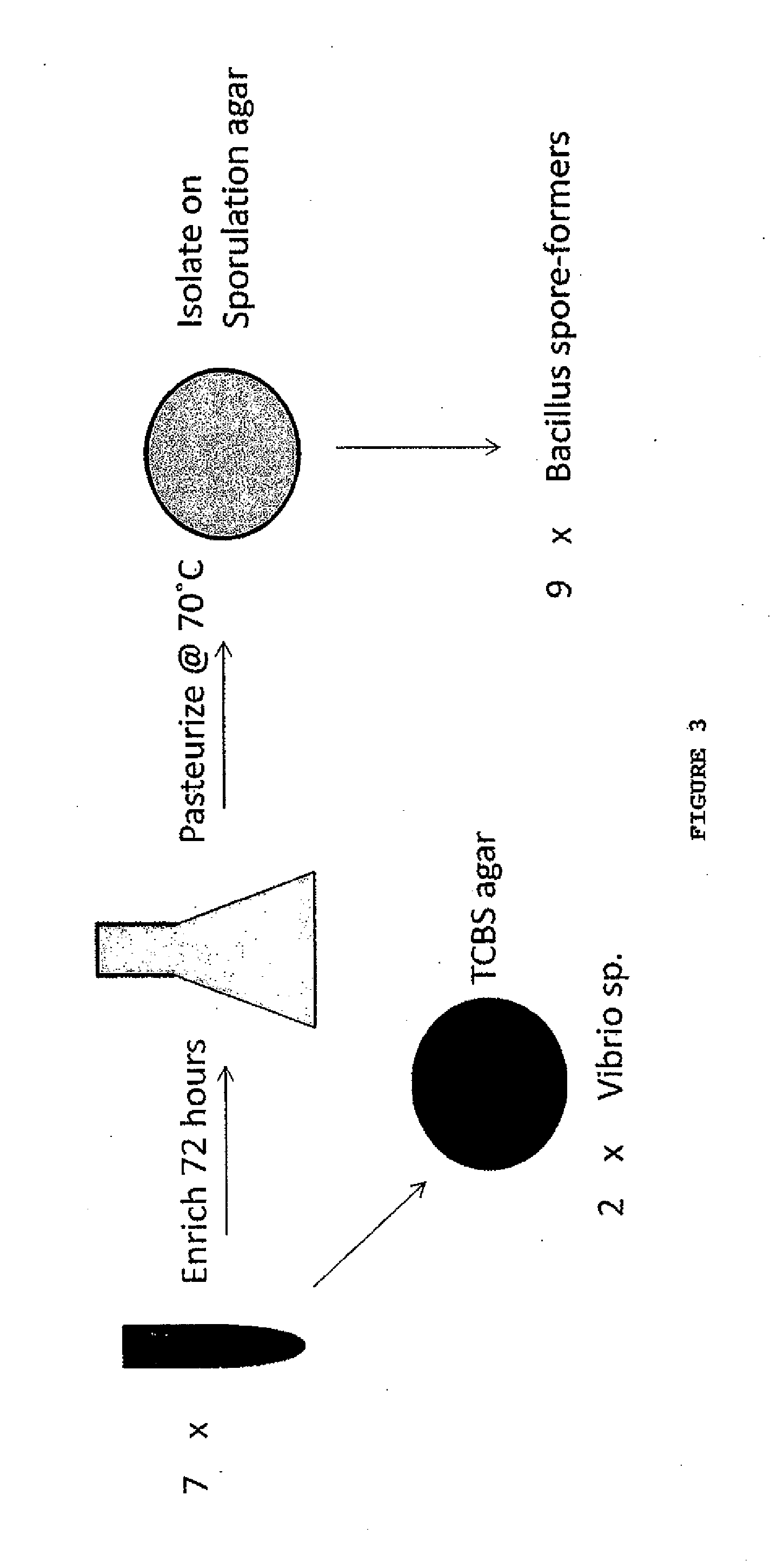Strains of bacillus for inhibiting foodborne pathogens
a technology of foodborne pathogens and strains, which is applied in the direction of antibacterial agents, bacteria material medical ingredients, drug compositions, etc., can solve the problems of unsuitable food use of known antibacterial agents, unfavorable public perception, and masking food spoilage, so as to reduce foodborne diseases
- Summary
- Abstract
- Description
- Claims
- Application Information
AI Technical Summary
Benefits of technology
Problems solved by technology
Method used
Image
Examples
Embodiment Construction
[0015]It has been discovered that foodborne pathogens can be inhibited when contacted with an effective amount of a bacillus strain exhibiting antibacterial activity.
[0016]The term “inhibit” means to reduce or arrest growth and / or reproduction of bacterial pathogens that can cause foodborne diseases, and encompasses killing such bacterial pathogens.
[0017]The term “effective amount” means an amount that will achieve a desired level of foodborne pathogen inhibition to effect a beneficial result such as reducing bacterial pathogen populations in or on food, or in or on animals that are processed into foods.
[0018]Foodborne pathogens that can be inhibited include Salmonella enteric, Escherichia coli, Clostridium difficile and Vibrio.
[0019]Bacillus strains exhibiting antibacterial activity include Bacillus licheniformis strains (e.g., OBT 712), and Bacillus amyloliquefaciens strains (e.g., OBT 618). The relevant sequence listings for Bacillus licheniformis OBT 712 and Bacillus amylolique...
PUM
 Login to View More
Login to View More Abstract
Description
Claims
Application Information
 Login to View More
Login to View More - R&D
- Intellectual Property
- Life Sciences
- Materials
- Tech Scout
- Unparalleled Data Quality
- Higher Quality Content
- 60% Fewer Hallucinations
Browse by: Latest US Patents, China's latest patents, Technical Efficacy Thesaurus, Application Domain, Technology Topic, Popular Technical Reports.
© 2025 PatSnap. All rights reserved.Legal|Privacy policy|Modern Slavery Act Transparency Statement|Sitemap|About US| Contact US: help@patsnap.com



